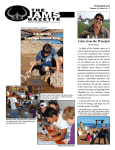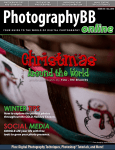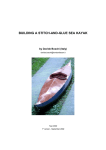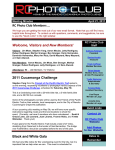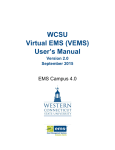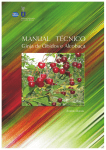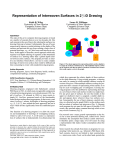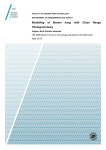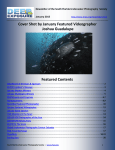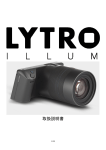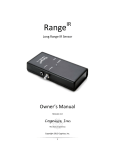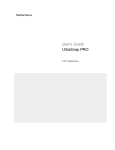Download PhotographyBB Magazine #48
Transcript
Photography Tips and Techniques Spotlight On Photographer Improving Your Digital Workflow Image Editing Tips & Tutorials PhotographyBB online Vol #48 - Jan. 2012 YO U R G U I D E T O T H E W O R L D O F D I G I TA L P H O T O G R A P H Y High Speed Photography! Setting Goals How to achieve measurable growth in your digital photography - at ANY time of year! READER FAQ! File formats, conquering blur, and image processing... We tackle YOUR questions! Digital Photography Techniques, processing Tutorials, and More! PhotographyBB photographybb.com online Credits Editorial: 27 Dave Seeram, Editor in Chief [email protected] Web Team: Dave Seeram, Web Design & Publishing, Admin Chris Styles, Forum Super-Moderator Greg McComsey, Forum Super-Moderator Publishing: 14 Dave Seeram, Publisher & Author Patricia Seeram, Copy Editor Art & Design: 17 Priscilla Ko, Creative Design Dave Seeram, Publishing & Layout On the Cover: Dave Seeram, Cover Layout and Design Cover Image: Courtesy of Peter Dorr Marketing: All marketing inquiries may be sent to: Dave Seeram, Editor in Chief [email protected] Contact If you would like to contact PhotographyBB Online, email: [email protected] or write: PhotographyBB #331 - 6540 Hastings St. Burnaby, B.C. V5B 4Z5 CANADA Article Submission: To request an article submission, please email [email protected] with your name, email address, and a brief description of your article and ideas. We look forward to hearing from you. 36 8 Photographic Food For Thought A Time for Setting Goals 14 Impressionist Photography The Art of Abstraction 17 Photographic Tips & Techniques Sports Photography 23 Reader FAQ We Answer YOUR Questions 27 Photographic Tips & Techniques High Speed Photography 35 Post-Processing in Photoshop Let it Snow... in Photoshop! 2 PhotographyBB Online Magazine www.PhotographyBB.com From The Editor’s Desk PhotographyBB Online Magazine Issue Forty-EIGHT A New Beginning, an Ending, and a New Beginning - Again! Welcome to the 48th edition of the PhotographyBB Magazine. January is always an interesting month for me... It’s the start of a brand new year, and the time where I contemplate my goals for the year ahead. For me, setting goals is such an important part of growth, both personally and professionally. Working towards achievements encourages measurable progress, and when not attainable, there’s always something valuable to be learned. This month, our friend and author Bill McCarroll gives us some tips on how to set goals for the year, and how to best achieve them. In addition to being the beginning of a fresh year, January also marks the end of our yearly publication cycle. Since PhotographyBB Magazine initially launched our first edition in February, this is our official “year-end” for the magazine - and what a year it’s been! January is also the time where I plan for our upcoming Anniversary Edition, with next month being the launch of our 4 Year Anniversary Special. I do think of each yearly cycle as starting something new. Many of my resolutions include plans, changes, updates, and innovations for the magazines to come. Let me be the first to tell you, I believe we’re going to knock your lens caps off with what’s in store for 2012! In addition to our extremely talented team of column authors, I would also like to give thanks to Jay Livens, Heather Bashow, and Peter Dorr for their guest contributions this month. They have each done uniquely outstanding jobs, covering a variety of topics I’m privileged to share. Lastly, one of the most important factors that contributes to the growth of our magazine, is your feedback. If there are any topics that you would like to see in our magazine, send me an email and I will take each and every suggestion into consideration. If you would like to contribute an article, my door is open to you too. My sincerest thanks to our seriously talented team of writers who tirelessly and selflessly contribute articles every month. My appreciation also goes out to our readers for your encouragement and support in reading our publication. Grab the hot beverages - it’s time for #48! Dave Seeram Editor and Publisher 3 www.PhotographyBB.com The Contributing Authors Connect with the writers of PhotographyBB Dave Seeram is the Editor of the PhotographyBB Online Website, PhotographyBB Forums, and Editor/Publisher of the PhotographyBB Online Magazine. Dave is also a digital photography and Photoshop enthusiast. Eva POLAK is one of New Zealand’s leading fine art photographers. With her specialty in impressionist photography, Eva is the author of two books and provides workshops on teaching creativity in fine art photography. PhotographyBB | Twitter | Facebook Website | Books Jon Ayres is a digital photographer from the United States, now living in Moscow. He enjoys photography, writing, and history. Jon has been involved in writing, digital art and photography for over 30 years and is a published photographer and author. John Rae teaches digital photography, Photoshop and Lightroom in the UK. Published author and award winning photographer, John is also an Adobe products beta tester and member of the UKs Royal Photographic Society Blog | Flickr | RedBubble Portfolio | Books Mike Frye is a talented photographer as well as avid blogger, flickrite, and social networking guru. Mike loves sharing knowledge, and showcasing talented photographers through his photography blog. JAY LIVENS is a computer guy a heart who loves digital photography, working with Linux, and running his own personal blog. Jay is our go-to guy for all things technical relating to digital photography and computers. Blog | Twitter | Flickr Blog | Gallery | Blipfoto Bill McCarroll is a passionate Nikon photographer, web developer, and a technology and camera gear addict pursuing his love for photography while supporting community activities as a volunteer. Jason Anderson is an active photographer, shooting primarily with Canon gear. His philosophy about photography is learning through the sharing of knowledge, and enjoys both the art of photography as well as his written pursuits. Blog | Twitter | Flickr The Authors PhotographyBB Online Magazine Blog | Twitter | Podcast Chris Styles (aka “Nobby”) is our forum moderator. Two years off retirement & proud grandfather to 2 boys, 4 girls, his interest in photography stretches back over 40 years, and really took off with a renewed passion since buying one of the first Hewlett Packard’s digital cameras. Chris now shoots with a Nikon D700. Greg McComsey is our forum moderator. Born and raised in Pennsylvania, he now resides in Ohio after serving 20 years in the US Air Force. Greg enjoys photography as a hobby and the continuing learning process that goes along with it. Gallery | Flickr Guest Contributors in this Edition: Heather Bashow - Sports Photography Techniques Peter Dorr - High Speed Photography Techniques 4 Bring all 48 Editions out into the field PhotographyBB Magazine can now be read in Apple’s iBooks Application! Now you can download the PhotographyBB Online Magazine and take it with you on the go! Thanks to the latest update in iTunes and the iBooks app for the Apple iPad, iPhone, and iPod Touch, now PDF documents can be imported into your iBooks application. If you are an Apple iPad, iPhone or iPod Touch owner, here’s how you can access the PhotographyBB Online Magazine library in your iBooks application: 1) On your iPhone/iPad’s Safari browser, go to the magazine download page URL: http://www.photographybb.com/magazine/download/ 2) Click the PDF download link for the magazine edition you would like to import to iBooks. 3) Safari will start to load the magazine in the browser window... This may take a few moments... 4) Once the magazine has loaded into Safari, tap the center of the screen to see an “Open In...” button in the top left corner. 5) Click “Open in iBooks...” and your download will immediately transfer over to your iBooks Library! PhotographyBB Online Magazine www.PhotographyBB.com NEWS CRAFT & VISION MAKING THE PRINT: PRINTING TECHNIQUES FOR THE DIGITAL PHOTOGRPHER Making The Print: Printing Techniques for the Digital Photographer – A MASTERCLASS by Martin Bailey is the 2nd eBook in the Craft & Vision Masterclass Series, and as expected, it’s packed with the good stuff when it comes to photoeducation. This eBook is a primer on printing and image preparation (for print), & includes excellent step-by-step instructions with plenty of visuals to help make the printing process exciting. Buy Now $5 NEW DROBO CONTEST WINNER! For the month of December 2011, we ran our second Drobo draw after giving away not one, but two Drobos in the month prior. PhotographyBB Magazine and Drobo are pleased to announce the winner of the December 2011 Drobo is: Walter Spears. Congratulations Walter! Disappointed you didn’t win? We’re doing it (YET) AGAIN! Next month’s magazine edition will be our special 4 Year Anniversary Edition, and to celebrate, Drobo is shelling out another prize for us to give away! Stay tuned in next month’s edition for details on how you could win. To purchase a Drobo, or to learn more about the world’s best and easiest-to-use storage array, visit: Drobo 6 PhotographyBB Online Magazine www.PhotographyBB.com UPDATES LEADING YOUR OWN PHOTO SAFARI A FREE EBOOK Leading Your Own Photo Safari: A Guide for Ensuring Success in Creating, Planning, and Leading a Photo Safari by Dr. Larry S. Anderson is the perfect primer for any photographer interested in organizing a group photo walk. Everything from planning, logistics, location selection, expenses, and communication are covered in-depth to give the reader more than enough information to successfully run their own photo walk. Perfect for photography clubs of all sizes, Dr. Anderson is offering this eBook as a free download to everyone. Enjoy! Download Now READER FAQS LYTRO LIGHT FIELD CAMERA Since the dawn of photography, the principals of lenses, optics, and camera functions haven’t changed - until now. Enter the Lytro, which captures the entire field of light, with one press of a single button. The Lytro makes photos like never before, giving users the ability to focus (and re-focus) after the fact through the entire depth of the shot. For more info: https://www.lytro.com/ Do you have a specific photography question for us? Our mission at PhotographyBB is to provide a positive and supportive community where beginners can get the answers they need to learn about the craft of photography. If you have a photography question, feel free to ask in our “No Stupid Questions” room in the bulletin boards. Or email your questions to [email protected] and we’ll add them to our growing list of questions that will be tackled in our recurring “Reader FAQ” column throughout the year. We look forward to hearing from you! 7 PhotographyBB Online Magazine www.PhotographyBB.com PhotographIC FOOD FOR THOUGHT AN EDITORIAL BY BILL MCCARROLL A TIME FOR SETTING GOALS Achieving Measurable Growth At Any Time of Year by Bill McCarroll Welcome to a new year! It’s amazing how time flies, isn’t it? A new year is often perceived as the time to make resolutions and set new goals. Did you set any goals in 2011, and did you manage to achieve them? How about in 2012 - have you set any photography goals for this year? If you haven’t yet, it’s not too late. In fact, it’s never too late to set concrete goals for your photography. It’s really just convenient for us to choose goal boundaries within a particular calendar year. Doing so helps us to create dates that align with significant periods of time. How could you forget to look back on the past year as you approach December 31st for example? The fact is that we can set finite goals for growing our photography skills that don’t necessarily need to align to a specific 365 day timeline. In fact, I’d encourage you to set interim but supporting goals that have shorter time spans; say 30, 60 or 90 days. 8 PhotographyBB Online Magazine These shorter term tactical goals may even support something bigger that’s more strategic and longer term. Keep focused on a broader vision for what you’re hoping to achieve. By setting shorter time intervals, you can focus and take satisfaction from meeting interim targets or achievements. This will help keep you encouraged. Setting Your Goals So, how might this work? Perhaps you’ve committed to a Project 366 this year. It’s a project many photographers have taken on given it’s a leap year in 2012. Others have accepted the personal challenge of a Project 52 where the goal is one meaningful photograph every week for a year. Whatever project you’ve defined, it can be thought of within the context of an overall strategic www.PhotographyBB.com goal for the year. It’s a significant personal challenge, one that demands your attention, resources and time. Taking on long term projects like these focuses your photography in a way that nothing else can. It commits one to a pattern of activity that requires your continual attention focusing your passion for photography in discrete and targeted ways. Many who take on a challenge like this find they can’t maintain the energy required for such a long term. It’s like making a commitment to lose weight in the new year, only to succumb to life’s daily pressures and fall off the wagon after your focus gradually is lost and everyone around you has forgotten your commitment, if you even announced it at all. Have you noticed all the advertising around weight 9 PhotographyBB Online Magazine loss this time of year? The media is really heavy on helping us focus on losing weight and transforming our bodies. Wouldn’t it be cool to see Nikon or Canon commercials encouraging us to grow our photography skills at the beginning of the new year. Might be a good idea for the camera manufacturers as many of us just received new cameras as gifts. It can be helpful to announce your new goals to others whom are close to you. A spouse or close friend can bring friendly support and pressure to keep going. They don’t even have to say much to you, but sharing a commitment can be a powerful personal incentive not to give it up. So, now you’ve set your goal and you’ve shared it with a few who are close. Again the timeline need not be a full year, it could be much longer or perhaps even shorter. The most important thing is you’ve set a target that is meaningful to you and that’s measurable. In other words, your personal goal is associated with something that you can recognize as being complete. It can be a date or an achievement that’s not as discrete, but perhaps measured by a degree of quality in your work that you can stand back with some satisfaction and know you’ve met your goal. In other words make it meaningful for you with the knowledge that you’ll know it when you see it. Keep this genuine and you’ll be fine. www.PhotographyBB.com How to Stay Focussed A good approach is to create milestones within the timeline of your overall project. These can be quantitative or qualitative. How many milestones do you need? Well it’s all up to you and the nature of your milestone goals and how they support your overall project goals. Quantity is fairly easy. If you want to create 366 photographs your unstated milestones may include 90 photographs at a time. If your overall strategic goal includes more more subjective qualities, perhaps you could split your project into complementary subjects or styles that will support your overall goal. If for example, you want to embark a Project 366 you could attach some qualifications to your project. Perhaps you’re going to shoot with a particular camera or you’re going to break your project into sections with different cameras supporting each milestone you set. Perhaps instead or in addition, you decide to shoot in black & white all year but you break your project into separate black & white styles to include sepia, grainy, HDR, or some other black & white style. You can also set goals that are more focused on the qualitative side. I like this particular emphasis because it forces one to think not only about consistent shooting over time but also requires the creation of work that continually challenges the quality of the work generated. 10 PhotographyBB Online Magazine There is also substantial tension created when we try to increase quantity and quality in tandem. It’s the age old challenge and a significant strategic goal. Again, the quantity is easy to measure and recognize as achieved. How then do we assess quality. Is the quality something we’ll decide on, or will we allow others to make the assessment? I think that we’re generally our own worst critics and are usually able to make good and fair judgements of how good our work is, if we’re brutally honest with ourselves. But sometimes the work we feel good about isn’t what attracts our colleagues’ interest and admiration. One potential way to go about the fight for meaningful and useful feedback is to share our work online and hope for critique that will allow us to grow in our photography. www.PhotographyBB.com Hopefully the feedback becomes even more confirming over time. The question is, where do we get consistent and valuable feedback? The common photography social forums might work under certain conditions. Generally work posted to sites like Flickr® or 500px® gets lost with lots of competing work. Your photographs may be good and generate passing comments that are generally complementary. But what you’re looking for are a few trusted critics that you can rely on for substantive feedback that will help you grow in your work. My suggestion is to find a few photographers whose work you admire and ask them to be online mentors. One thing about our 11 PhotographyBB Online Magazine photography community is the general willingness of skilled artisans that are willing to share their knowledge and time to help others. What I don’t suggest is asking someone whose time is likely to be pulled to the extreme. For example, I’d love to have Joe McNally as my mentor, but I’m realistic enough to know that I still have a lot to learn about lighting before asking someone like Joe to spend time looking at my work. Additionally, I know the demands on Joe’s time are substantial and it’s not likely I’d be able to frame a relationship like that anytime soon. But there are others on social media that I interact with consistently and I know they’d be more than willing to give me honest feedback if I asked nicely. I also admire their work and skills and can see qualities that I’d like to work towards. Note that I’m not interested in copying their style. I trust their experience and knowledge to help www.PhotographyBB.com advance my skills and style improving the overall quality of my own original work. Having a trusted mentor can help with feedback and keep us focused on quality of our work. How then can we grow in knowledge to learn the skills we’ll need to meet our qualitative goals? The answer I’d suggest is to invest in learning. Take some photography classes at a local college or university that align with your needs. If this kind of continuing education isn’t available to you, go online. There are a ton of video tutorials online that are usually free for specific snippets of knowledge. Subscribe to a photography blog and/or podcast. Again, the willingness of accomplished photographers to share means that we can gain significant understanding of photography concepts and techniques that can help meet our qualitative 12 PhotographyBB Online Magazine goals. I’m subscribed to at least a dozen great photography podcasts via iTunes that I can listen to on my computer or iPhone whenever my time allows. There is also some incredible subscription based training available via sites like Kelby Training that have the advantage of bringing many great video learning opportunities together in one place. Learning is Good, Practice is Better However lofty your new year goals, they will require your commitment in time and effort. Many of your achievements will come through practice and actually putting your knowledge to work. Shooting regularly and consistently is critical to meeting your goals. Theory and knowledge need to be applied. Whatever you think you know may come undone when you try to put it into action. Great plans and www.PhotographyBB.com theories are consistently upset by attempts in real world application. You need to apply your knowledge to real world situations so you can understand what it takes to adapt your theoretical understanding to practical situations. In fact, much of your quality and skill growth will be derived through your ability to adapt to new environmental conditions and situational challenges. So, although the first weeks of the new year are already past, it’s not too late to set and pursue new goals for 2012. Think it through. Challenge yourself to grow in your skills with a renewed and increased passion for your photography. In the end, you’ll have some great shots that you’d otherwise never have and you’ll look back with a great degree of accomplishment and satisfaction. Simply - Go for it! This article and images contained are Copyright © and courtesy of Bill McCarroll. Please contact the author directly with any questions. 13 PhotographyBB Online Magazine www.PhotographyBB.com impressions of abstraction by Eva Polak Photography is an expressive and versatile medium. Photography allows us to capture the world with incredible detail or create interesting and ambiguous abstraction by concentrating just on its overall impact to achieve an impressionistic image. It is surprising how little visual information is required to convey enough for the viewer to understand and appreciate the image. An abstract photograph, stripped bare of unessential details, is capable of generating impact, simplicity and spontaneity. It is also a source of endless possibilities and creativity. 14 PhotographyBB Online Magazine A simple way to describe the term “abstract” would be to use words like essence, summary, extract or distillation. Creating abstract images is like a two-way dialogue in which a photographer gives the viewers just a hint of information and they respond by filling in the details using their imagination and power of association. The abstract process begins with an idea and how it can best be expressed. Consider making abstraction to be a form of communication with the choice of subject matter, composition and mood all being vital components of this communication process. Think of the scene www.PhotographyBB.com in front of you in terms of basic geometric shapes, lines and colour and how all those elements can help you to convey your message. Imagination is what starts you on this journey. Let your imagination find a way to express itself. This eventually will end up in an image that captures the essence of the subject you choose. Colour is a very powerful element of the abstract work, because it has the ability to stimulate emotion, and to make statements about shapes and space. It will also set the atmosphere of the image giving it a sense of time and mood. The key issue in creating a strong abstract image is to concentrate on the focal point, the single element that tells the story. 15 PhotographyBB Online Magazine Key Points to Remember: - Keep it simple - Establish a focal point - Extract the essence through form and colour - Have a strong vision for your message - Decide on the degree of abstraction www.PhotographyBB.com Once you establish a strong impacting focal point, the rest of the image will look quite appropriate in its place. It is important to handle a technical aspect of photography with confidence, because it will give you freedom to create. But remember, technique without inspiration means nothing. When we begin to photograph, technique is usually our only or main concern. However, as we grow, we realize that pure technique is just like having a good tool and that is about all it is good for. It will never make a good photograph by itself. Remember, the creation and appreciation of art is a personal and subjective process. You are free to photograph and interpret the world as you see it. It is also worth mentioning that as an artist you need a lot of practice and consistency. Getting desired results depends upon your hard work and benefiting from your mistakes. It never hurts to try something new. Even your mistakes are invaluable. Failure leads to success and learning what not to do is as important as learning what to do. This article and images contained are Copyright © and courtesy of Eva Polak. Please contact the author directly with any questions. 16 PhotographyBB Online Magazine www.PhotographyBB.com Tips & Techniques Photography SPORTS PHOTOGRAPHY HOW TO TAKE BETTER ACTION AND SPORTS PHOTOGRAPHS by Heather Bashow Sports may be the most fun category in photography because there are so many varieties of venues and ways in which you can capture your subjects. From children to adults, high school to pro sports, close-up to wide-angle, winning or losing - the possibilities are endless. This month, we’ll explore some techniques for better sports photography through examples taken at BMX, triathalon, and horseshow events S o what separates the buckwheat from the chaff in sports photography? A number of things contribute to a great shot, but top on my list is getting in close to the subject. A common fault of photos that fall into the snapshot category is that they are taken from too far away. Detail and expression are extremely important in sports photography. Along with those, we will explore some other important components as well. The Gear I’d like to tell you that a point & shoot camera will do the job, but sports photography is one genre where the DSLR has the advantage. The reason that most DSLR lenses cost substantially more than a point & shoot camera is the superior quality of the glass. Furthermore, a DSLR will allow you to select modes and settings to achieve the results you want. 17 PhotographyBB Online Magazine An excellent zoom lens and a fast burst mode are essential in sports photography. The zoom allows you to get in close from the sidelines and to isolate your subject, and the fast burst will give you a better chance of capturing the optimal action moment. A tripod with a smooth panning ability or a monopod can also be useful. I tend to prefer hand-held with image stability for many sports shots since the action is usually happening all over the place. The exceptions are in venues like horse jumping where I can predict exactly where the best action will take place, and set up a tripod accordingly. Also, if I am using a tripod, I am using a remote shutter release. There are many excellent sports cameras available. My personal camera choice is a Canon 7D, which has an 8 frame-per-second www.PhotographyBB.com max burst rate. I have three fine lenses for sports shooting. The first is a Canon 70200mm f/2.8 L IS USM. This lens produces beautiful shots with fantastic bokeh, and it is the best for low light. Although renowned as a portrait lens, it isn’t the sharpest glass when wide open. I also have fine results with a Tamron 18-270 mm f/4.5. It’s not as good for light gathering as the Canon, but it gives me the options of both longer reach and wider-angle capabilities when I need them, and the price makes it a viable option for bad weather or dirty conditions. My third lens is a Canon 300mm L, which works well to pull in distance shots, particularly with a 2x extender. However, because I lose 2 f-stops with the extender, this combination isn’t effective unless the venue is very bright. The triathlon cycling shots in this article were taken with 18 PhotographyBB Online Magazine the Canon lenses; the horseshows and BMX photos were shot with the Tamron. So, once you have the most capable equipment, how do you capture the best shots? This is where the fun starts because you have so many choices! Expressions I would bet that if you watched Wide World of Sports in the early 70s, the one thing you remember is the hapless ski jumper being flung sideways into the air - the “agony of defeat” shot! Capturing the joy of victory is fine, yet the shots with the most impact can be of those who have tried, and failed. In most cases you are viewing the culmination of many years of work and conditioning, and you are in a position to see the athletes as it all comes together in competition. Whether you capture joy, disappointment, frustration or actual tears, there is intense emotion in any of these shots. www.PhotographyBB.com widest aperture, so you may have to go a bit less wide to get the sharpest shots. Monitor your ISO and try to keep it at 100 or 200 for the cleanest shots. If possible, anything that is not part of the sport should not be in the photo. Details Detail shots are also very effective, but they must be well-composed and the detail must be integral to the sport. So doing a middle area crop that shows this dressage rider’s saddle, boots, reins, hands and so on… all of this emphasizes the sport. A long shot of the rider will not focus attention on these details. Your zoom lens will help you get in close to show the world the concentration on the athlete’s face. The result may, in essence, be a portrait of the athlete. If that is the case, be sure to include some of the equipment or a recognizable part of their uniform so that the sport is obvious. Remember, where glamour shots are not enhanced by mud, blood and sweat are great contextual elements in sports photography. Composition This is where so many shots fail. The focus of your shot must be the athlete. No matter how stunning the background, you are doing a sports shoot, so negate the background. This means getting in close, and using as wide an aperture as possible. Many zoom lenses are sharpest one or two stops up from their 19 PhotographyBB Online Magazine Capturing Movement Moving subjects can be shot two ways. You can freeze the motion, or you can pan with the subject, which will keep the athlete in focus while causing the background to blur in streaks. To freeze motion, such as a horse and rider clearing a jump, you will want a fairly quick shutter speed of around 1/250, and a wide aperture to blur the background. These shots are best when framed close to the subject, capturing both the action and expression of the athlete. Using a burst mode to capture two or three shots will ensure that you have a number of shots from which to choose. www.PhotographyBB.com If however, you want to emphasize speed, pan with the moving athlete. If you set your camera to AI Focus mode (or your camera’s equivalent continuous focus mode), your camera will keep the person in focus as long as you have your focus point consistently on the subject. Put the camera in Shutter Priority at 1/30 second, and that will do the trick for a moving subject such as a cyclist. Using a wide aperture while panning will blur the background and illustrate the sense of motion. Keep your focus point on the athlete, press the shutter half way as you pan along with the athlete, and shoot when the composition is best. 20 PhotographyBB Online Magazine www.PhotographyBB.com Color Color can make sports imagery pop, and happily these days sports clothing is often vibrantly colored. If you look at the compression photo of the three cyclists, it is the middle cyclist that draws your eye with all the red, and that is where I placed my focus point. If all the cyclists had been in gray, the shot would not be as pleasing. Telling a Story Sometimes you can find a shot that tells a complete story, such as the one with the young BMXers paying rapt attention to one of their heroes. No caption is needed – the body language of the boy in the green shorts says it all. Compression Compression can be very effective in races, and is easily achieved with a telephoto lens. Compression shots are taken from a bit of distance, with an aperture in the range of f/8 or so. This provides enough depth of field to keep one or two subjects in focus, while still throwing the background out of focus enough to emphasize the attention onto the athletes. Taken from about a 7 o’clock position to the subjects, this compresses the focused subjects, making them look closer to each other than they are, and heightening the sense of competition and excitement in the shot. For example, the cyclists in this shot were not as close to each other (or me) as they look. 21 PhotographyBB Online Magazine www.PhotographyBB.com Software Even a reasonably priced program like Photoshop Elements can vastly improve your photos. With cropping, levels and other tools as your disposal, what has come out of the camera need not be your final result. For example, this shot was cropped to pull the cyclists up to the front edge of the photo. I then tweaked the levels to pop the contrast and color. Finally, I used the Photoshop Elements “expressionist brush” at 1% opacity to blur the background slightly since even at only f/6.3 the far riders were a bit too focused for my liking; and then I ran the brush twice more over the lamp poles and stop lights to further blur them. It is to your advantage to explore what your editing software can do for you. Pulling it all Together When you understand the sport you are covering, you will know where to be for the best shots. Better yet, if you happen to love the sport, that love along with your respect for the athletes will shine through. Know what your camera and lenses are capable of in different situations. Try various apertures and shutter speeds, shoot from different angles, pay attention to the details, find the color, and get in close. By keeping all these elements in mind, you’ll find your sports photography lives up to your expectations. This article and images contained are Copyright © and courtesy of Heather Bashow. Please contact the author directly with any questions. 22 ? PhotographyBB Online Magazine www.PhotographyBB.com Q: I’ve spent so much on a great DSLR and lenses... Why do I need to buy expensive software and spend time processing my digital images after the fact? Shouldn’t my images look brilliant straight from the camera? reader FAQ by Jay Livens In a candid interview-style format, Jay Livens shares his personal insights and answers the top most commonly asked questions - submitted by you - our readers. Yes and no. I believe in the old adage that “less is more.” My personal feeling is that excessive processing of images often leads to poorer results, not better. However, if you do shoot RAW images then you will need a tool to convert the RAW files to JPEG, and for that I use the software that came with my camera. This tool allows for some basic tweaking such as color saturation, contrast and sharpness. About 95% of the time, those minor tweaks are enough to get the image I want, so I do not need fancy image editing. Advanced image editing software like Photoshop or GIMP can provide significant benefits in the 5% of time where more involved editing is required. A perfect example is one of our family’s Christmas photos where everyone looked great except the dog. In another shot, everyone looked terrible except for the puppy. I used GIMP to insert the dog from the second image into the first and thus created a picture where everyone looked great. The process to achieve this was time intensive and while the result was good, I would hesitate to do this on a large number of images because of the amount of effort involved. 23 PhotographyBB Online Magazine Remember that back in the days before there was Photoshop, photographers carried all kinds of interesting lens filters to achieve desired image effects. Today, these are less important because we can often create the same effects digitally in Photoshop. Thus some photographers may use Photoshop to create new effects or views on their images that would not have been possible given the camera or environmental limitations. www.PhotographyBB.com One final note, if you are interested in advanced image editing software and are on a tight budget, I suggest that you check out GIMP. It is an open source solution that is free and has many of the features of Photoshop. Q: My photos look great on my camera’s LCD, but when I load them on my computer they come out all blurry. What am I doing wrong? In short, basic editing such as sharpening and white balance tweaks is almost always required; however, these modifications do not require the advanced features or complexity of a Photoshop type solution. The power of most RAW converters is that they enable these tweaks in a fast and efficient manner and can help accelerate photographic workflow. These tools essentially enable brilliant images straight from the camera. Advanced editing tools have their place as well, but add complexity and time to a photographer’s workflow. They can create significant photographic benefits; however, I believe that a properly exposed and composed image in the first place can reduce the need for complex post-processing operations. Thus for me, I find advanced image editing to be an exception to the process rather than the norm. As I see it, there are two questions here. The first is “why does the image look sharp on my LCD and soft on my monitor?” The second question is a much larger one which asks “why are my resulting images soft?” There are many reasons for this second question and I could devote an entire article to the question, maybe I will in the future! 24 PhotographyBB Online Magazine The biggest reason that images look sharper on the LCD is the size of the display. Today’s LCD’s are high resolution, but are still small in size compared to your monitor. When images are shrunk as they are on the LCD, the size reduction also reduces the visibility of aberrations or issues like softness. Thus, the smaller images will always look sharper as compared to the image on your screen. You can see a similar effect if you view a sharp image on your computer screen and then zoom in the view. The sharpness will rapidly disappear and the image will turn into a blurry mess. One thing you can do to address this in-camera is to zoom in on the camera LCD to get a sense of general image sharpness. It also helps to compare two images in-camera that you have identified as representing opposite spectrums of sharpness to get an idea how they look on the LCD. The other consideration is that most of today’s cameras use anti-aliasing filters to reduce some forms of aberration. The result of AA filters is that images can come out a bit softer and so minor sharpness enhancement can benefit many images. This is typically done in post-processing, so the benefit may not be applied in-camera. Finally, it is important to remember what format you will be outputting images to. For example, zooming 100%+ into an image will make any picture look soft. However, in practice, most people output common sizes like 4x6, 5x7 or 8x10. All of these image sizes are significantly smaller than 150% view and will always look sharper than that level of magnification. Q: What is the best file format for shooting and for archiving my photos? RAW or JPEG? www.PhotographyBB.com This is a great question and is one that I have thought about frequently in the past. Let me explain why you would consider the two different formats and then provide perspectives JPEG – This is an industry standard file format that is readable by virtually every application that handles images from your basic web browser to your most advanced image editing software. This great flexibility is highly beneficial. However, JPEG files are 8-bit which means that they have a lower color depth (aka image resolution) than RAW files and you cannot non-destructively tweak them as you can RAW images. RAW – RAW images contain data directly from the camera’s sensor and typically have a much great color depth. (12-bits or more) This means that there is more image data contained in the file. However, RAW files are also proprietary and thus every camera has a different format. The specialized nature of RAW files means that only certain applications can read them such as RAW converters and image editing software. The question of archiving becomes a tradeoff. JPEGs are lower resolution, smaller in size and universal, while RAW files 25 PhotographyBB Online Magazine www.PhotographyBB.com contain the most image data, but are proprietary. I personally rely on RAW. While I understand that the files are proprietary, there are many RAW converters available, including opensource ones. Typically these programs maintain backwards compatibility and so people with older cameras can still convert their images. (For example, UFRaw, an open source converter, still maintains support for the Canon D30 [http://ufraw.sourceforge.net/ Cameras.html] which was released in 2000.) Going forward, I would expect UFRaw and other equivalent programs to maintain support for these older cameras since there is no real work required to maintain compatibility. Thus, I am less concerned about the future compatibility and I choose RAW because I prefer the highest resolution version of the image. Q: Is it better to set my white balance in-camera, or leave my camera on auto and let my post processing software handle it instead? In my experience, cameras do a relatively poor job with whitebalance and thus images can appear with colors that don’t match expectations. I have the same issue across a huge range of cameras from extremely expensive dSLRs and entry-level point and shoot cameras. For whatever reason, manufacturers have still not completely solved this issue. One exception is when you are shooting in a consistently lit environment such as a studio. In this case you can set a custom white balance in advance and know that it is accurate. My general recommendation is to shoot RAW images whenever possible because they allow non-destructive white-balance adjustments in post-processing. All modern RAW converters allow you to click to set white balance and also apply that same white-balance setting across multiple images. It is a very powerful and easy process. You could fix white balance in a JPEG image as well, but it is typically a more complex process, destructive to the image data, and will result in a permanent change to the image. This article is Copyright © and courtesy of Jay Livens. Please contact the author directly with any questions. 26 Tips & Techniques Photography HIGH-SPEED PHOTOGRAPHY by Peter Dorr It was just before the Christmas holidays when I received my Stopshot Electronic Flash Trigger set. I took a few full days to master this device and have a proper play with it, but first I’ll explain what it is and what you can do with it. A device like this is used in High Speed Photography (HSP). The only way to get this type of HSP to work is to shoot in a pitch-dark set, open the shutter, fire a short quick flash at the right time, and close the shutter again. Oh, and preferably flash at the precise moment a small bullet hits a glass, or when a drop of water hits the surface of some liquid, or even 27 when you throw a strawberry into a big bowl of water. While the results are pretty nice, it is rather impossible to perfectly time this all manually. That’s why you need an electronic device to help you time it correctly. The setup I create was fairly straight forward. The aquarium halfway filled with water on a white table with a white background. On each side of the aquarium, about half a meter above it, I had aligned the laser transmitter and receiver of the Stopshot and connected to the main unit. I put two flashes in front of the aquarium; one flashing from above and one lightning the back (which was switched off for black backgrounds of course). All flashes were connected to the Stopshot. In this article I will describe the three different shoots mentioned above. All were first-time attempts, so I am excited to see where I can go with these after a bit more experience. Lastly, this is not a sponsored article and I have absolutely no connection with the company nor do I receive any compensation whatsoever. It’s just my honest user experience, and since I am a happy user, I feel comfortable in sharing my experiences and recommending the equipment. Splash Photography (Fruit Drops) Equipment: • A small aquarium filled with water • Some colored fruits and roses to throw in • A splash-proof, plastic white background • Canon EOS 5D MkII • Canon EF-180 f/3.5 macro lens • A tripod • A remote trigger • 4 identical Canon 580EX II’s (no studio flashes!) • And, of course, the Stopshot 28 An although this may sound pretty technical, the reality is that all of the cables are cleverly constructed and labeled so there is really just one way of doing it. Luckily, I could not go wrong here. The lasers nicely fit on a basic tripod, so really, everything is very easy to setup. The important thing to note here is the setting of the flashes. When I had them flashing at full power, I got a lot of movement blur in the pictures. These flashes fire off light for about 1/800 of a second, so I had to turn down the flash power to 1/128 to get a much shorter flash (1/35,000 of a sec) to completely freeze the action. Hence the number of flashes I needed was really crucial. That immediately rules out most Studio Flashes because their minimum time is around 1/1,000 sec. The last step before succes is to establish the exact delay between the fruit crossing through the laser beam and the flashes firing. Despite some pretty scientific formulas described in the manual, I went about it in the traditional alpha-male “trial and error way” and found out that 110ms was about right. 29 So there we go! Lights off, press the shutter, drop the fruit through the laser beam, and release the shutter again. Click – my first real picture was there, but it wasn’t yet perfect. Tons of things were still wrong and needed some adjustment: 1. Focussing. Since I was shooting with a 180 mm Macro lens on f/4 my aperture gave me very limited depth of field. I spent serious time on focussing only to find out that you never throw the fruit in exactly the same place. So closing down your aperture as much as possible to get a bigger DOF is required. I was able to get to f/11 when bumping my ISO to 200. 2. The aquarium. Of course, I forgot to dry the glass after every shot, so I ended up with a nice splash behind a very wet and already fully sprayed glass window. Too much clutter to even think of fixing in Photoshop. Hence, I had to clean the windows manually after each shot. 3. My flashes. They are not really designed to cope with continuously throwing big splashes of water over them. So within 5 minutes they were soaking wet which caused 2 of them to temporarely stop. I fixed that by drying them and putting transparant plastic bags over them. 4. Reflection. Flashes reflect strongly on the glass, so I had to carefully reposition them so as not to see their reflection. 5. Timing of the fruit. For my first shot I dropped it just above the laserbeam and got a nice soft splash, well timed on the picture. However, I wanted a BIG splash, so I then tried dropping it from a higher position. 30 That worked very well, although the timing on the Stopshot needed some adjusting to 85ms because the fruit accelerated to a higher speed when crossing the beam. Hence, the flashes needed to fire sooner. All of these adjustments made the results much better and pretty consistent. Now all I needed was the strawberry to strike a good pose when dropped into the water. It took me about 20 shots to get one or two decent ones, but it was great fun to experiment. I tried different colored and fading backgrounds as well, which also worked nicely. On average my camera was set to 2 sec, at f/8 - f/11 and ISO 100 or 200. Water Drop Photography Equipment: • The water tube with electronic valve • The mini sensor that goes with it • Water and some dye for colored effects • A plastic white background, splash proof • Canon EOS 5D MkII • Canon EF-180 f/3.5 macro lens • A tripod • 2 identical Canon 580EX II’s • And, of course, the Stopshot Before I could get this working I needed to mechanically setup the tube with the electronic precision valve and the mini sensor. Unfortunately this part may not be the best designed. The lack of a clear instruction on how to put it together did not help either. I ended up designing my own installation, which worked out for these shots. Although to be fair, after a more thorough study, I found the correct way of setting it up as intended. 31 Shooting these images was extremely straightforward. The user manual describes what the height of the tube and the sensor should be. For once, I followed a user manual’s advice. There is a simple preset you can select in the Stopshot that works like a charm, and within 5 minutes I had my first good pictures taken already. It appears that there are two presets with a few more for yourself to add: “One Drop” and “Two Drops”. When I selected the One Drop preset I was able to create nice clean drops. It wasn’t very exciting, but the real fun started with the Two Drops setting. The valve leaves 2 drops falling, just milliseconds apart. The first drops falls and creates a little volcano, then the second one drops on top of that right when it is at it’s peak to create a nice “umbrella” of water. I played a lot with different colors of liquid and different viscosity. However, in the end I found that this does not really change a lot. One of the best effects I got was when I shot a clear glass of water with some colored drops falling into it, having different colored paper laying at the bottom of the glass. That provided a nice color tint to the liquid as you can see. 32 Once I had this set up, it was a piece of cake to shoot these pictures over and over again. Ballistics Photography Equipment: • A white background • Canon EOS 5D MkII • Canon EF-24-105mm f/4L IS USM • A tripod • 4 identical Canon 580EX II’s • The Stopshot microphone • The Stopshot unit • An air rifle with holder base • SEVERAL bulbs, glasses and bottles This was by far the most difficult set to setup, not so much for the Stopshot equipment (that was easy), but the actual shooting in the dark allowed for a few serious misses. The Stopshot microphone is positioned next to the gun. The sound of the gun firing is captured and that triggers the Stopshot to fire the flashes. I had 4 flashes next to 33 each other, all at 1/128 (1/35.000 sec) and that proved to freeze the motion sufficiently. I again needed all 4 flashes to ensure I was able to get a decent DOF. I first shot with an old air riffle causing the flash delay to be set at around 120ms, but after upgrading to a more sophisticated and stronger riffle, I was able to turn it down to 25ms. The new gun had much more power and I was able to shoot through thicker glasses. It should be noted that the instruction manual suggests using the laser beam instead of the microphone. I have not tried that yet - again I always read user manuals AFTER the event. *grin* The most important thing here is to make sure nothing gets damaged by the flying glass, most importantly - yourself. I protected myself and had protected my gear with some plastic sheets to prevent the glass from damaging my camera, my lens or my flashes. With everything setup as described, the only thing left to do was take photos. Here are some of the results I achieved. This concludes my first week with the Stopshot... almost! By New Years Eve, I found out that the device is very capable of timelapse photography as well. So, I quickly set it up to shoot an image of the fireworks every 15 seconds, at midnight. That worked very well, although I had pointed my camera to the area where I expected the most fireworks… So an incidental piece is shown, and for the rest I have 240 pictures 34 of my neighbor’s house with a dark sky. Hands-on experimenting is a fun process in photography, so I will definitely explore the time-lapse capability more. What’s next? First, I plan to optimize the existing set by making it more water resistant, extending the cables and taking out some unneeded cable connectors to reduce risk. I am also creating a simple RCA splitter box to flash six identical flashes at the same time (we have tried 8 identical flashes on one output port of the dropbox already and that works as well). In the future I plan to extend my set by buying the Stackshot for full-length, sharp macro images. It looks supercool, but it will cost at least another $600. I am also looking at buying a Flash Sequencer to allow for multiple flashes in a sequence. This is really fun stuff, so maybe you’ll see more from me in the near future! For more info on the Stopshot, visit their website at: http://www.cognisys-inc.com This article and images contained are Copyright © and courtesy of Peter Dorr. Please contact the author directly with any questions. 35 www.PhotographyBB.com Photographer to HDR Artist by Jon D. Ayres The Digital Artis PhotographyBB Online Magazine This was an oil rendering is did using Painter to which I applied an HDR effect to bring out some detail and give the work something of a 3D effect. The Art of High Dynamic Range Simulation If I were asked, “What is the most popular style of image-based art beyond photography?”, I would have to say, HDR (High Dynamic Range) photographic art. It is so popular that almost all of the major postprocessing programs now include it, and there are a large number of high dynamic range software packages available, numerous books, videos and web pages like http:// www.stuckincustoms.com. Many cameras now have either an HDR mode or will auto bracket a series 36 PhotographyBB Online Magazine www.PhotographyBB.com of photos at different exposure levels for blending into HDR photos later using software. Just as with all types of art, HDR also has many different styles. There are also plenty of biased opinions on whether or not HDR is really art, the use of multi-exposures vs. a single photo when creating an HDR image, and even which software is best for HDR. In the world of HDR photography, these are all hotly debated. Now, before I upset some of the HDR purists, let me say with certainty that blending several photos at different exposures does create the best HDR image, and I gladly will admit that. However, that does not mean that some very good HDR art can be created from a single photo. It can and I hope to prove it. In this month’s article, I will mainly focus on single exposure, image-based HDR art. The image-based artist does not always have the opportunity to take multiple exposures of a subject, let alone carry a tripod, remote shutter release and other goodies often used in HDR photography. I frequently go on tours and if you have ever been on a tour, you know how some can rush to cover a lot of ground in a short time. Situations such as these can be limiting when trying to capture multiple exposures, so as an artistic decision, a single exposure HDR conversion can work beautifully for creating digital art. Blending multiple exposures together does offer the HDR artist more options with their work and sometimes much better quality, but for the image-based artist willing to put forth some effort into creating their work, some pretty good HDR work can be Photomatix Pro HDR is the most popular HDR program, and the one all the others are judged by. created from a single image. To demonstrate the effectiveness of only using a single exposure, all of the work in this article has been created from a single image, so judge for yourself. I think it is best to let the socalled intellectuals argue about just what art is and leave the artists to create their work for the viewers to enjoy it. Just what makes High Dynamic Range photography special? I suppose that depends on the viewer, since in reality it is the viewer that determines what the art means to them. So, this section contains only my thoughts and nothing more, about the types of HDR artwork I like. My opinions are just that, only my opinions. To create good HDR artwork depends on the contrast and saturation adjustments of the HDR photo. Many HDR artists go too far in my opinion, but then again, just because I do not care for that type of art does not invalidate it as an art form in any way. I just do not care for the “cartoonish” look that some HDR artwork has. 37 PhotographyBB Online Magazine There are many HDR artworks that are works of beauty. I have always admired much of Trey Ratcliff’s StuckInCustoms.com art. I like HDR photos that appear realistic, and I also enjoy some that look like actual paintings. Just like all image-based art, I feel that it’s important to note that it is the strength of the original photo that will make or break the artwork. I’ve never been much of a purist when it comes to photography and art. As far as I’m concerned, anything is fair game if it results in a visually appealing end product. There is a time to follow rules and a time to break the rules. Most people tend to overdo the tone-mapping process, which often leads to ugly halo in the resulting image. It’s ugly (to me) and completely defeats the purpose of the high dynamic range such photos are supposed to have. Yet I also often see www.PhotographyBB.com people asking about the technique on how to reproduce halo effects. So, while I do not prefer it, I respect that some people have differing opinions, and that is what makes art great. I feel that HDR works better with certain photos and subjects; just as certain digital paint styles work better with some photos rather than others. It is just like any other photography technique - It can be done very well by those with artistic vision who use it to create, rather than the masses who choose use it to “fix” or “save” photos that were terrible from the start. The artist (photographer) uses the tools in his or her palette to achieve the results they seek. Sometimes it is to create something unreal, sometimes it’s to try and capture things exactly as they appear, or sometimes it is to create an image-based digital painting. I think ‘light painting’ is similar in that you can use it to make things appear more real, or more unreal. Both are perfectly acceptable. That being said, I sometimes find the unreal HDRs to be exciting and enticing because of how different they feel, especially some of the HDR artwork that appears to have been painted. The NIK EFEX HDR PRO plugin for Photoshop is really for the “HDR artist”, and is just so much fun to use. I used the grain setting to create something of a pointiest style of art. 38 PhotographyBB Online Magazine www.PhotographyBB.com Dynamic-Photo HDR by MediaChange is another HDR favorite of mine, and was able to clean up a color cast in this image. In my opinion, Dynamic-Photo HDR gives the HDR artist more options than other programs. I think what matters most is whether or not the person creating the photo likes it. After all, most of us who create image-based art do it because we want to, and I seriously doubt that few of us create because we have to. Isn’t this what art is really about thoughts and ideas? If we all liked the same thing, life would be extremely boring and drab. If you like shooting HDR images and sharing them with your friends, then I say go for it. If you don’t, then don’t create them. Beauty is in the eye of the beholder after all. For those who don’t like image-based art including HDR photography, that is their opinion and they are welcome to express themselves how they see fit. Over time things evolve, but they never remain pure to the original. The best way to illustrate this is with music. The first music made by man was banging on a hollow log with a stick. To say that all other forms of music are fake is to deny the genius of Beethoven, Mozart, Wagner, Hank Williams or even the Ramones or Blondie; some of the many musicians I like. 39 PhotographyBB Online Magazine www.PhotographyBB.com HDR Software There is a lot of HDR software available for both the Mac and Windows systems. I currently own and use: PhotomatixPro, Fhotoroom HDR, Dynamic-Photo HDR 5, Photoshop CS5 with Nik HDR Efex Pro and Topaz Adjust. There is no post-processing program that can do it all. They all have their own strengths and weaknesses so I usually have more than one program for my image-based art creation. Be forewarned, for some reason all of the HDR software companies seem to like using examples of HDR created with their software at full strength. Many of the examples are not very good and do not do justice to the true HDR art that can be achieved using the software. PhotomatixPro seems to be the most popular, and the program others are judged by. This also seems to be Trey Ratcliff’s favorite HDR program and he does create some fantastic HDR artwork. For anybody considering purchasing this program, remember that you can save 15% by using the coupon code “photographybb.com” at http://www.hdrsoft.com Fhotoroom HDR is the newest version of Artisan HDR, one of the first HDR programs I enjoyed using. This is my favorite HDR style good detail, a subtle 3D look, and slightly painted while retaining a realistic look. Fhotoroom HDR is one of my favorite HDR programs. This program can almost do it all as far as I am concerned. There even is a free version if you do not care to use RAW files for creating your HDR artwork. Plus, if you register with Fhotoroom HDR, there are a few free Photoshop and Lightroom plugins you can download. There are many art color styles and templates, you can correct white balance, color saturation, sharpness, and even halos can be corrected in Fhotoroom HDR. If I were to recommend a good HDR program, especially a free one, this would be it. http://www.fhotoroom.com/ Dynamic-Photo HDR is another program I like using. I just fell in love with Dynamic Auto Painter, and Mediachance’s DCE Autoenhance is one of the best white-balance and image distortion correcting programs for Photoshop. Dynamic-Photo HDR is great if you’re working with a single photo that you want to convert into HDR. There are plenty of options for conversion and adjustments. Dynamic Auto Painter has a pretty active user forum, but 40 PhotographyBB Online Magazine www.PhotographyBB.com Dynamic-Photo HDR’s forum is not as active. http://www.mediachance. com/hdri/ I have played around with Nik’s HDR Efex Pro, and without a doubt it is one of the better Photoshop HDR plugins there is. What makes Nik plugins so strong are the extra presets you can download and install. Nik HDR Efex Pro has a multitude of conversion options that are available in the software, and options to force alignment checks on the images (yes, you can do hand This example is an image-based oil painting I completed by running held HDR), and an option for a Dynamic-Photo HDR effect after doing the digital paint conversion. I used just enough strength to bring out the brush strokes. ‘Ghost reduction’. If you have things changing from one shot to another (people at night Two of the best books in my opinion for example) then the software will attempt are Fine Art Photography High Dynamic to remove them. If, like me, you prefer a Range: Realism, Superrealism, and Image more natural look and believe that shadows Optimization for Serious Novices to Advanced sometimes need to look like real shadows, Digital Photographers by Tony Sweet, and The then this plugin has all the fine controls HDR Book: Unlocking the Pros’ Hottest Postneeded to get the very best from your source Processing Techniques by Rafael Concepcion. materials. These two books will show you how to create http://www.niksoftware.com/hdrefexpro/ some good HDR art. I tend to use Topaz Adjust frequently; not so much for HDR work, but to bring back a little detail in my image based work. The Topaz Adjust user interface is very intuitive, and the software comes with a ton of presets. You can add to the 23 provided presets by saving your own settings or importing others from the Topaz online community, which makes Topaz Adjust a powerful plugin. http://www.topazlabs.com/adjust/ Regardless of your personal views on HDR photography and/or HDR image-based art, nobody can deny its popularity. It stirs emotions in the viewers, just like any other art form, and as such, one should never be afraid to experiment and try something new. True art has no rules, and your number one critic should always be yourself. Listen to yourself honestly because if you do, you will be creating some great HDR image-based artwork. This article and images contained are Copyright © and courtesy of Jon D. Ayres. Please contact the author directly with any questions. 41 PhotographyBB Online Magazine www.PhotographyBB.com in Photoshop Post-Processing LEADING THE EYE USING CUSTOM VIGNETTES TO DRAW ATTENTION TO A SUBJECT by Dave Seeram Vignettes are a great way to draw both focus and attention to a subject in a photo. They help to draw your viewer’s eye to the main focal point of the image, while also serving as an effective way to minimize distractions in the background. Previously, we’ve examined Photoshop’s built-in vignetting lens correction tools, but this time around we’ll look at creating custom vignettes that allow for more control in both size, shape, placement, and strength. Not only is this method more versatile - it’s extremely easy. Let’s get down to it! Step 1 Open your image in Photoshop. 42 PhotographyBB Online Magazine www.PhotographyBB.com Step 2 The first thing we need to do is duplicate the background layer by pressing Command-J (Mac) or Control-J (PC). Change the blend mode of this layer to Multiply. At this point, your whole image will look much more dark. Next, click on the “Add Layer Mask” icon at the bottom of the Layers Palette. A white layer mask should appear next to your duplicated layer, as seen here: Lastly, press the “D” key to return your colour swatches to their default (black/white). Step 3 Press “B” to select the brush tool. At the top of your window, click the drop-down arrow on the brush size indicator, and choose a roundshaped brush. Increase the size fairly high, and reduce the Hardness of the brush all the way down to 0%. Click the brush size indicator (up top) again to close the brush options window. Lastly, press “3” to reduce the opacity of the brush down to 30%. Step 4 Choosing a brush size from the options window in the previous step can be tricky, depending on the resolution of your photo and size of your subject within the composition. Use the square bracket keys “ [ “ or “ ] “ to decrease/increase the brush size as necessary. Start with a brush size that approximately covers the full width of your subject, as seen here: 43 PhotographyBB Online Magazine www.PhotographyBB.com Step 5 Now it’s time to bring some light back onto the subject. Paint over your subject with a black brush, ensuring that you are painting on the layer mask and not the image itself. Since the brush opacity is set to 30%, you can make multiple passes over certain parts of the image that you wish to shed more light on. Feel free to adjust the brush size to bring back more brightness to key areas such as faces. The Layer Mask in Detail This is what our layer mask wound up looking like for this particular image. You can clearly see the multiple passes that were done over the face of our subject. As a side note, to view your layer mask in the main window, hold down the option key (Mac) or Alt key (PC) while clicking on the layer mask icon in the Layers Palette. Option/ Alt - click again to return to the main view. Complete! The advantage to using custom vignettes is that it offers far more control and flexibility. Often our main subject is not positioned in the centre of our photo, so this technique can be applied to add further depth between your subject and the background, while drawing your viewer’s attention deeper into your photograph. Have fun and experiment with this technique! This article and screenshots contained are Copyright © and courtesy of Dave Seeram. Please contact the author directly with any questions. 44 PhotographyBB Forums Photo Assignments The challenge with this photo assignment was to take a picture that mentally evokes a sound associated with the main subject. These were our top selections, but make sure to visit the forums to see more great entries! Photo Assignment Photo Assignment: “Sound” (Top) Photo by Shane (Bottom left) Photo by “m--cube.” (Bottom right) Photo by “rene52.” Thanks to all participating members. We look forward to all of your submissions in our upcoming challenges! 45 Step into the Spotlight! Would you like to be featured in the PhotographyBB Online Spotlight on Member section? If so, please let us know at: [email protected] We’ll feature your photos, a small biography and write-up about you, as well as links to your web gallery or photography related business. We all love photography and image editing, so let’s get to know each other! Been Around the World? We are looking for talented writers who would like to share their experiences in visiting far away places, or even your home town for that matter. In our Photography Around the World column, we take our readers on a photographic journey, and we would like you to be our tour guide. If you would like to share your story and photography of a city you have visited, please contact us and share your idea with our team. We’d love to hear from you! Discounts for Readers: For those of you who are interested in getting into HDR photography, there simply is no better HDR software then HDRsoft’s Photomatix Pro, available as a stand alone software and as a Photoshop Plugin. Visit: http://www.photographybb.com/hdr/ and use the coupon code: photographybb.com for a special discount. Also, check out the Shop PhotographyBB site for links to some great deals on cameras and accessories. Best deals on the web! Thank you for reading the PhotographyBB Online Magazine. We hope you enjoyed it, and we’d love to see you again next month. If you have any questions or comments for us regarding this magazine, please feel free to email us at: [email protected] Do You Have a Great Idea for a Photography Article? We are looking for talented individuals who would like to expand their portfolios by volunteering to contribute articles to this e-magazine! If you are interested, we’d love to hear from you. Topics of Interest are: - Photography Techniques - Photography on Location - Photoshop Tutorials - Hardware / Software Reviews - Camera Equipment - Member Spotlight - Plus we’re open to new ideas! To become either a regular contributing author, or even just for a one-time article, please email us at: [email protected] Introduce yourself, share your idea, and maybe we’ll see you in next month’s issue!















































